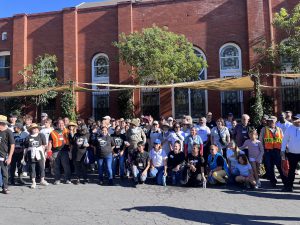Learn More
Parks Access
Metadata
Variable Definitions:
Access to All Parks: The percentage of residents that live within 1/2 mile of a public parks that are included in 2022 LA County Parks Needs Assessment
Access to Good Parks: The percentage of residents that live within 1/2 mile of a public park that was considered to be in “good condition” by the 2022 LA County Parks Needs Assessment, based on park features such as lighting, cleanliness, restrooms, playgrounds, and other amenities.
Methodology Note:
Parks data was made available as a shapefile. The research team added a 1/2 mile buffer surrounding each park, then overlaid the data with 2020 Census Tracts to spatially analyze what portion of each tract lies within proximity to the parks.
The LA County Parks Needs Assessment focused on evaluating community parks and recreation areas around the county, but did not evaluate National Forests such as the Angeles National Forest on the same evaluation criterion. Thus, the Access to Good Parks map does not represent proximity to National Parks.
To access the full report and methodology, please visit the LA County Parks Needs Assessment here.
Source:
Los Angeles County Department of Parks and Recreation: 2022 Parks Needs Assessment Plus
Years Available:
2022
Why are these variables important to measure?
Citation:
Related Data Stories

The Book Truck: Delivering Literacy in Southern California
Why Do Some People Read? For children in some communities, books and reading are omnipresent. Reading begins as amusement and entertainment and grows into a



